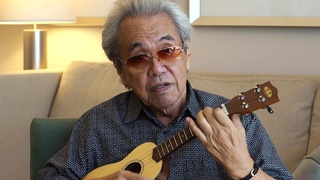Interviews
Pushing Taiko to the Limit
What was great for me to see, I was inspired by the fact that people could and did incorporate whatever was part of their upbringing. So some people had incorporated drum and bugle corps type rhythms and techniques. Others had taken more non-traditional instruments and brought them into Taiko. I mean beating on mufflers and things like that. Canon, they call it. It turns our Tanaka Sensei uses one, too. But when I first saw it, it was kind of mind-blowing. And to hear all the different kinds of sounds you could get out of it—very creative. I saw pretty much the difference in groups in terms of some who were more traditional as opposed to some who were really trying to push the limits. And of the two, I kind of like the ones who push the limits. My favorite part of doing taiko has always been the shishimai and coming up with different stories or ways that we could present the Mayan dance. That’s been my favorite thing to do besides playing fue and shakuhachi.
Date: December 10, 2004
Location: California, US
Interviewer: Art Hansen, Sojin Kim
Contributed by: Watase Media Arts Center, Japanese American National Museum





